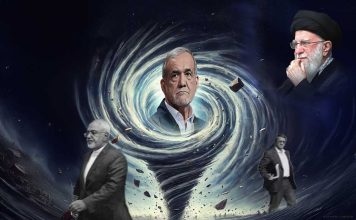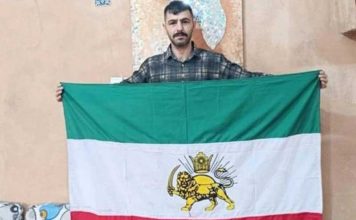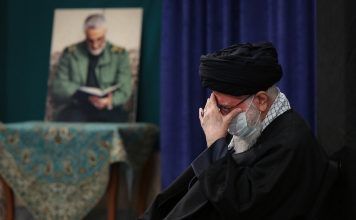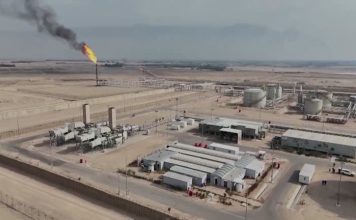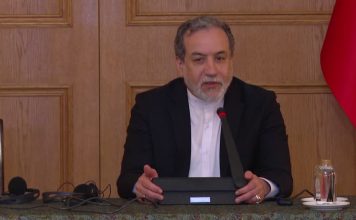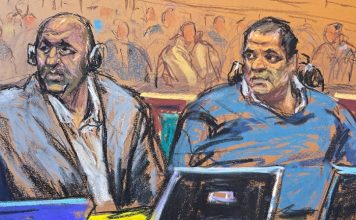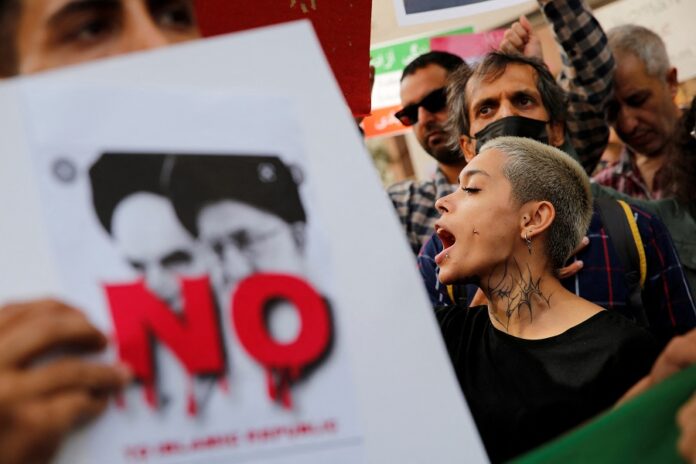
Three weeks after the violent death of 22-year-old Iranian Kurdish woman Mahsa Amini at the hands of Iran’s morality police for the crime of wearing her hijab improperly, protests continue to rage across the country. These demonstrations defy both repression by security forces in the streets of major cities and restrictions on the internet. They challenge the legitimacy of a hardline regime whose authority appears to be eroding by the day.
Activists inside Iran and analysts outside it assess that these protests could be the most serious challenge to the regime since millions took to the streets after the disputed 2009 presidential election.
There have been recurrent nationwide demonstrations since then. In December 2017, ten days of rallies were spurred by economic conditions as well as the compulsory hijab law. In November 2019, up to 1,500 people were killed during four days of protests sparked by a sudden rise in petrol prices. At the local level, there are demonstrations over pay and working conditions, the environmental situation, and detentions.
In these cases, though, the mass rallies have ebbed after a few days. Following their shows of anger and demands for rights, Iranians apparently returned to resignation over their economic hardship and lack of political agency and social freedoms.
In contrast, the current protests have not receded so far, despite the regime’s use of force and attempts to shut down communications.
This is not this just a display of resistance from one group, or a movement led by men. Women, some of them taking off or not wearing the hijab, have been prominent and there have been large gatherings at universities and schools.
The regime has not been able to close down the movement with a staged counter-protest, as it did with mass rallies in December 2009. A government-organised demonstration after Friday prayers on September 23 brought out only tens of thousands, far from the “millions” proclaimed by the state media.
As always with mass protests, Iranian authorities have tried to portray the rallies as plots orchestrated by the US, Israel, Saudi Arabia, “mercenaries” and “terrorists”. But so far, no attempt to tear down the protests has gained the upper hand. The vast majority of demonstrations have been non-violent and the expression of Iranians, rather than the work of devious foreign elements.
On Monday, Iran’s supreme leader tipped off his concern. In Ali Khamenei’s first public comments on Amini’s death, which he called “a tragic incident that saddened us”, he claimed:
The recent riots and unrest in Iran were schemes designed by the US; the usurping, fake Zionist regime; their mercenaries; and some treasonous Iranians abroad who helped them … How can some people not see the US and Israel’s hands in this event?
The demonstrations have widened beyond Amini’s death. The compulsory hijab is a marker of concerns about the regime’s social restrictions on women and on all Iranians. The chants of “women, life, freedom” point to the campaign for political agency.
EXCLUSIVE: Iranian Protesters Speak Out in Interviews With Kayhan Life
Demonstrators emphasise that this is a movement with “no leader”, which raises a challenge beyond the short-term. How long can the spontaneous pursuit of rights continue without organisation? Should a specific platform, beyond abolition of compulsory hijab and of the “morality police”, be produced? Still, the demonstrations have pulled the curtain back on a regime which rules by coercion and patronage rather than acceptance.
The mass marches in 2009 highlighted the discontent of many Iranians, as well as their aspirations for a system not manipulated by the supreme leader through his functionaries and the Revolutionary Guards.
The regime was able to shut down those aspirations but it has not conquered discontent. The economic situation in Iran has deteriorated throughout the past 13 years. Inflation is officially at more than 52%, with higher rises for food and other essentials. There has been only a small increase in GDP after declines of 6% to 7% in 2018 and 2019. Only one-third of jobs lost during the COVID pandemic have been recovered. This week, the Iranian currency set a new all-time low against the US dollar of 42,229.5:1.
The 2015 nuclear deal offered a window of opportunity for recovery. But that soon narrowed and was shut in 2018 by the Trump administration’s withdrawal and its expansion of US sanctions. The renewal of that agreement has been stalled for months over Iranian demands such as strict limits on inspections of its nuclear facilities.
Meanwhile, the regime takes an even harder line at home. After his miscalculation led to the unexpected victory of the centrist Hassan Rouhani in the 2013 presidential election, the supreme leader used the new president as a firewall. Khamenei allowed Rouhani to take the blame for economic difficulties and for the failure – because of the hardliners’ stonewalling – to deliver social reforms.
In 2021, Khamenei and the hardliners consolidated their domestic position. They used a “managed election” put the head of judiciary, Ebrahim Raisi, into the presidency. But now they have no firewall against the mounting problems of Iranians.
Khamenei’s regime is increasingly isolated. The stalemated nuclear talks means there is no prospect of renewed links not only with the US and Europe but also much of Asia.
China is happy to take discounted Iranian oil but cautious about political ties. India is looking to Khamenei’s “enemies” – joining the US, Australia and Japan in the Quad alliance – rather than allying with Tehran. In the Middle East, the regime is contending with an unstable situation in Iraq, and talks for reconciliation with Saudi Arabia are making slow progress.
Perhaps most importantly, a vaunted alliance with Russia is tethered to Vladimir Putin’s failing invasion of Ukraine. Far from seeing an economic boost, Iran finds itself handcuffed to another heavily sanctioned system which could soon be in upheaval.
Khamenei has insisted that: “Whenever the enemies plan on creating unrest anywhere, it will be the courageous and faithful people of Iran who will stand up to them the most.”
Unfortunately for him, the courageous and faithful on the streets of Iran beg to differ.

